Unit 6 At one with nature Using ideas 课件(共39张,内嵌音频)-高中英语外研版(2019)必修第一册(共40页PPT)
文档属性
| 名称 | Unit 6 At one with nature Using ideas 课件(共39张,内嵌音频)-高中英语外研版(2019)必修第一册(共40页PPT) | 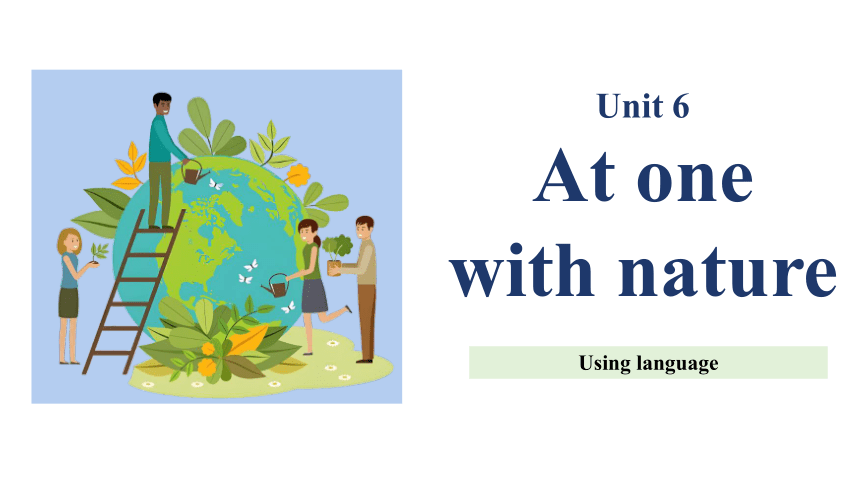 | |
| 格式 | pptx | ||
| 文件大小 | 36.9MB | ||
| 资源类型 | 教案 | ||
| 版本资源 | 外研版(2019) | ||
| 科目 | 英语 | ||
| 更新时间 | 2025-05-30 16:58:55 | ||
图片预览


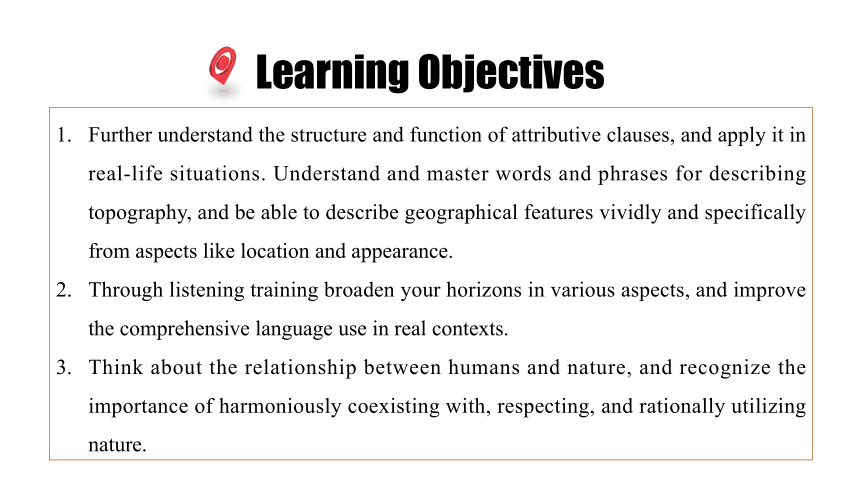
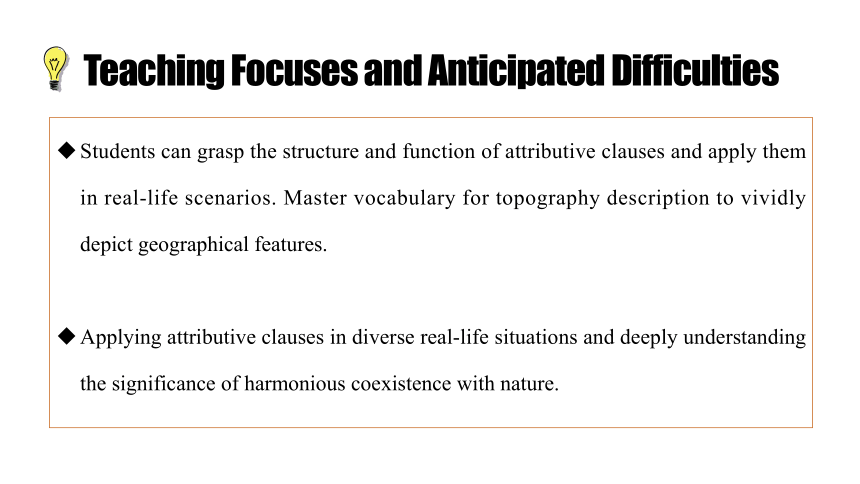

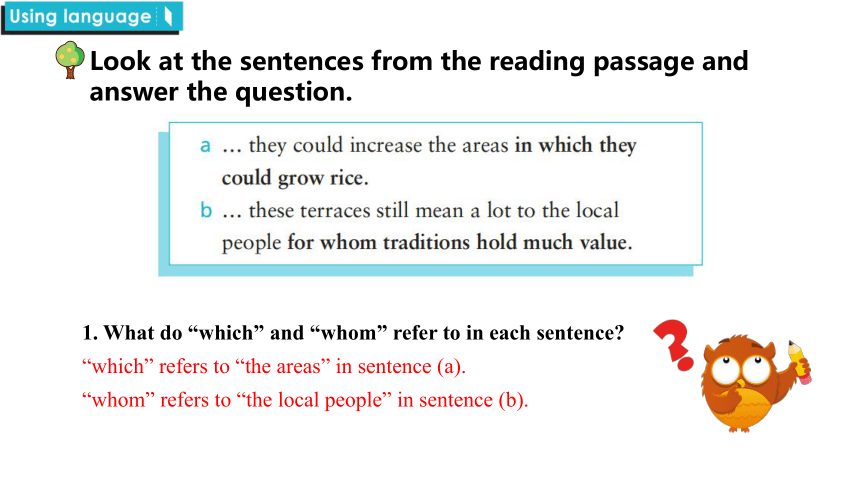


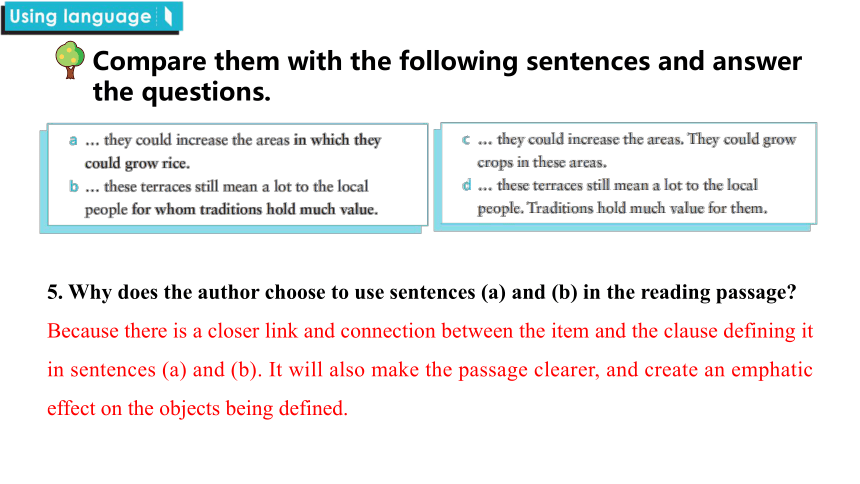
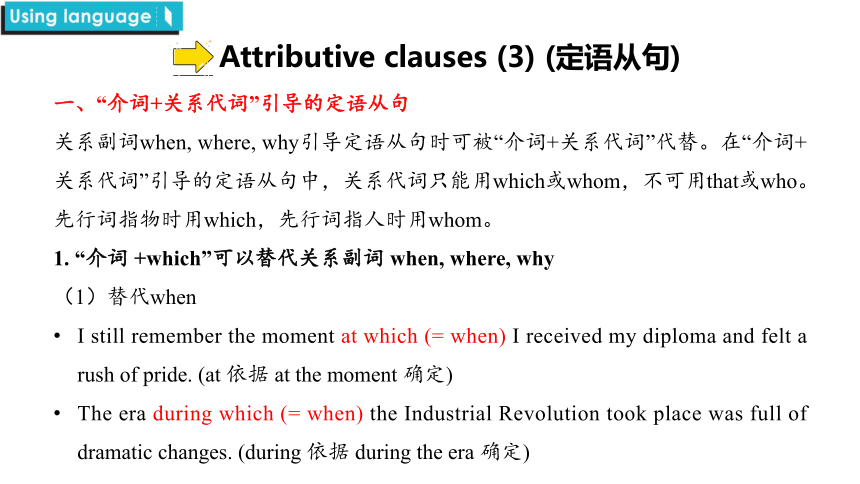

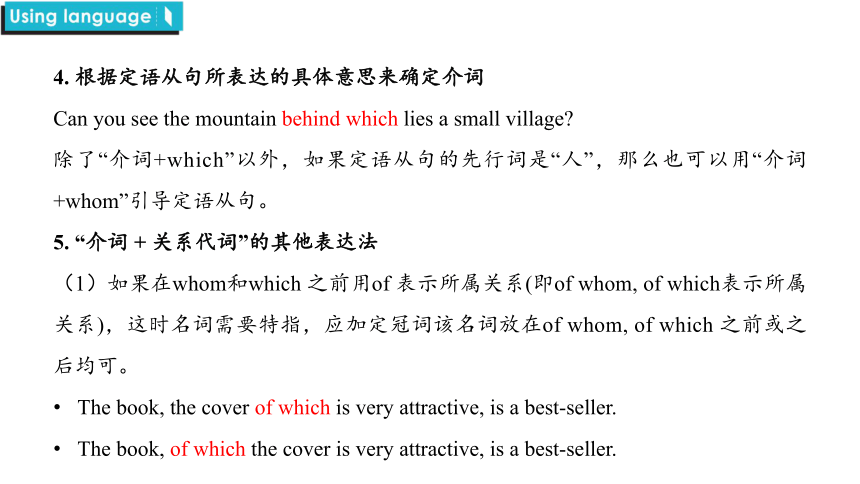
文档简介
(共39张PPT)
Using language
Unit 6
At one
with nature
Learning Objectives
PART. 01
Understand the daily study and life of British middle school students by watching videos. Based on your own daily study and life, compare the study and life in Chinese and British schools, and find out the similarities and differences between the two. Talk about your first impression of high school life, and have a preliminary perception of the study and life in the senior high school stage.
Learning Objectives
Further understand the structure and function of attributive clauses, and apply it in real-life situations. Understand and master words and phrases for describing topography, and be able to describe geographical features vividly and specifically from aspects like location and appearance.
Through listening training broaden your horizons in various aspects, and improve the comprehensive language use in real contexts.
Think about the relationship between humans and nature, and recognize the importance of harmoniously coexisting with, respecting, and rationally utilizing nature.
Understand the daily study and life of British middle school students by watching videos. Based on your own daily study and life, compare the study and life in Chinese and British schools, and find out the similarities and differences between the two. Talk about your first impression of high school life, and have a preliminary perception of the study and life in the senior high school stage.
Teaching Focuses and Anticipated Difficulties
Students can grasp the structure and function of attributive clauses and apply them in real-life scenarios. Master vocabulary for topography description to vividly depict geographical features.
Applying attributive clauses in diverse real-life situations and deeply understanding the significance of harmonious coexistence with nature.
Grammar
PART. 02
Look at the sentences from the reading passage and answer the question.
1. What do “which” and “whom” refer to in each sentence
“which” refers to “the areas” in sentence (a).
“whom” refers to “the local people” in sentence (b).
Look at the sentences from the reading passage and answer the question.
2. Why do we use prepositions before “which” and “whom”
Because “which” and “whom” serve as the object of the action phrases that end with a preposition.
3. In sentence (a), can we replace “in which” with “where” without changing the meaning
Yes, because “in which” and “where” both mean “in the areas”.
Compare them with the following sentences and answer the questions.
4. What is the difference between the two groups of sentences
Sentences (a) and (b) both contain a clause defining a noun in the sentence. Sentences (c) and (d) are constructed with a pair of simple sentences, with one defining a noun in the other sentence in each pair.
Compare them with the following sentences and answer the questions.
5. Why does the author choose to use sentences (a) and (b) in the reading passage
Because there is a closer link and connection between the item and the clause defining it in sentences (a) and (b). It will also make the passage clearer, and create an emphatic effect on the objects being defined.
Attributive clauses (3) (定语从句)
一、“介词+关系代词”引导的定语从句
关系副词when, where, why引导定语从句时可被“介词+关系代词”代替。在“介词+关系代词”引导的定语从句中,关系代词只能用which或whom,不可用that或who。先行词指物时用which,先行词指人时用whom。
1. “介词 +which”可以替代关系副词 when, where, why
(1)替代when
I still remember the moment at which (= when) I received my diploma and felt a rush of pride. (at 依据 at the moment 确定)
The era during which (= when) the Industrial Revolution took place was full of dramatic changes. (during 依据 during the era 确定)
(2)替代why
I’m curious about the reason for which (= why) he decided to pursue a career in acting. (for 依据 for the reason 确定)
2. 依据与先行词的固定搭配确定使用什么介词
I’ll always cherish the vacation during which I explored the ancient ruins in Greece. (during 依据 during the vacation 确定)
3. 依据定语从句中动词或形容词的搭配来确定介词
He bought a new guitar, on which he spent nearly half of his monthly salary. (on 依据 spend...on 确定)
These are the scientific theories of which she is most skeptical. (of 依据 be skeptical of 确定)
4. 根据定语从句所表达的具体意思来确定介词
Can you see the mountain behind which lies a small village
除了“介词+which”以外,如果定语从句的先行词是“人”,那么也可以用“介词+whom”引导定语从句。
5. “介词 + 关系代词”的其他表达法
(1)如果在whom和which 之前用of 表示所属关系(即of whom, of which表示所属关系),这时名词需要特指,应加定冠词该名词放在of whom, of which 之前或之后均可。
The book, the cover of which is very attractive, is a best-seller.
The book, of which the cover is very attractive, is a best-seller.
(2)在whom和which之前用of还可以表示部分与整体的关系。这时表示“部分”的数词或代词,放在of whom, of which之前或之后均可。
The class has 30 students, one of whom won the national math competition.
The class has 30 students, of whom one won the national math competition.
The team has ten players, all of whom are highly skilled.
The team has ten players, of whom all are highly skilled.
The club has five founders, the youngest of whom is just 25 years old.
The club has five founders, of whom the youngest is just 25 years old.
二、特殊结构的定语从句
除了限制性定语从句和非限制性定语从句外,还有一些其他形式的定语从句。这些定语从句在实际运用过程中具有较强的灵活性,因此其结构也较为复杂。
1. 嵌入式定语从句
“嵌入式”,相当于在定语从句前加了一个“主谓句”(位置在关系词之后),让定语从句作其宾语。
She is the only student who we think will pass the difficult exam.
(“who will pass the difficult exam” 作 “we think” 的宾语从句)
They found a painting which they assumed was created by a famous artist.
(“which was created by a famous artist” 作 “they assumed” 的宾语从句)
2. 并列式定语从句
“并列式”,是两个或以上的定语从句相互并列,中间由and或or连接,共同修饰一个先行词,相互之间不包含、不修饰、不重叠。
New York is a vibrant city where dreams are pursued and which attracts countless tourists every year.
3. 多重式定语从句
“多重式”是两个定语从句按先后顺序和不同层次修饰先行词即两个定语从句的谓语表示的动作发生的时间有先有后,其中一个包含另一个。第二个定语从句的关系代词不可省略,中间不能用and连接。
Do you have any stories you want to share that you experienced during your travels
4. 省略式定语从句
在含将来意义的定语从句中,我们可以省略主语和谓语的一部分(主要是情态动词和助动词),而代之以“介词+关系代词+不定式”。
I’ve collected some materials with which to make a model plane.
(完整形式:I’ve collected some materials with which I want to make a model plane.)
She is looking for a box in which to store her jewelry.
(完整形式:She is looking for a box in which she can store her jewelry.)
5. 分隔式定语从句
定语从句一般紧跟在被它所修饰的先行词之后:但有时候它和先行词之间插人其他成分,使得它与先行词分隔开来,这种定语从句叫作分隔式定语从句。
(1)先行词与定语从句被一个状语分隔。
There are many tourists in the city who are eager to visit the historic sites.
(2)先行词与定语从句被另一个定语分隔。
She has a book with a beautiful cover which was given to her by her best friend.
(3)先行词与定语从句被谓语分隔。
此时,先行词通常是句子的主语,因定语从句较长,主句谓语较短,为使句子结构平衡,常将定语从句移至谓语之后。
The athlete crossed the finish line who had been trailing for most of the race.
Connect the sentences with a preposition+whom/which.
The Zhuang is an ethnic group. Its population is the largest of all ethnic groups in China.
Guangxi is a province. The Longji Rice Terraces are located in it.
I want to visit this cultural landscape. The title of UNESCO World Heritage Site was given to it in 2016.
He is an expert on rice planting. The local Zhuang people have learnt a lot from him.
1. The Zhuang is an ethnic group of which the population is the largest of all ethnic groups in China.
2. Guangxi is a province in which the Longji Rice Terraces are located.
3. I want to visit this cultural landscape to which the title of UNESCO World Heritage Site was given in 2016.
4. He is an expert on rice planting from whom the local Zhuang people have learnt a lot.
Complete the passage with a preposition+whom/which.
Among the many beautiful treasures people can receive from nature are natural dyes. The most common natural source 1______________ natural dyes come is plants. Materials for making natural dyes can often be found in gardens 2___________ colourful flowers are planted. Other natural dyes are made from insects, sea creatures and mineral compounds.
Natural dyes are now returning to popularity, especially with artists and craftspeople. The reasons 3___________ they prefer natural dyes are that the colours are brighter and can be kept longer. Natural dyes are also becoming more popular with consumers 4__________ caring for the environment is a priority. More and more people feel that by using natural dyes, we can remind ourselves of nature’s beauty and protect the natural world.
from which
in which
for whom
for which
Read the descriptions and match them with the pictures.
Complete the email with the words in bold in Activity 4.
waterfall
valley
Basin
sea
Work in pairs. Talk about other geographical features in the world.
Listening
PART. 03
Around four million people live in the Arctic region, of whom around 170,000 are Inuit.
In the Arctic, the temperature can reach as low as -70℃.
The Arctic includes parts of eight countries: Canada, Russia, the United States, Denmark, Norway, Iceland, Sweden and Finland.
Did You Know
Listen to a girl talking about Inuit life and identify the things that are mentioned.
c
b
e
d
a
Listen again and complete the table.
Now identify the language the girl uses to discuss advantages
and disadvantages. Listen again if necessary.
Inuit life Advantages Disadvantages
Housing Igloos are quite warm inside and it’s easy to find the 1_________________. Igloos can only 2_________ for around 50 days.
Food Eating a lot of fish and meat keeps our bodies strong so that we can 3_______________. The 4____________ makes it difficult for us to grow enough vegetables and fruit.
Polar night It gives us more 5______ to be with our family and friends. Life can be 6________ sometimes.
Tourism It brings more money and 7_______________. Our environment is being 8_________.
building materials
be kept
fight the cold
cold weather
time
boring
job opportunities
polluted
Work in pairs. Talk about life in the tropics and the Arctic.
student A
You live in the tropics. Talk about your life with Student B from the Arctic.
Advantages of living in the tropics:
It’s usually warm all year round.
It’s easy to grow food.
The jungles are full of beautiful plants and animals.
Disadvantages of living in the tropics:
It can get too hot to go outside.
There are tropical storms.
Food can go bad quickly.
student B
You live in the Arctic. Talk about your life with Student A from the tropics.
Advantages of living in the Arctic:
The Northern Lights are amazing.
Food can be preserved for a long time.
It’s not too crowded.
Disadvantages of living in the Arctic:
It gets very cold and is dark during much of the year.
Fruit and vegetables don’t grow naturally.
Life can sometimes be boring and dull.
Work in pairs. Talk about life in the tropics and the Arctic.
Vocabulary
1. replace
replace A with/by B 用B替换A
in place of 代替
例题:
In the revised version, the author replaced negative words _______ positive ones to change the tone.
with
Vocabulary
2. living
alive adj. 活着的;有活力的
live adj. 活的
lively adj. 充满活力的,生动有趣的
make a living 谋生
earn a living 谋生
例题:
She’s always the most _______(live) person at parties, making everyone feel welcome and entertained.
lively
Vocabulary
3. narrow
narrow-minded adj.气量小的,小心眼的,隘的
have a narrow escape 死里逃生,险些遇险
narrow the gap 缩小差距
narrow...down (to) 缩小……的范围(到……)
例题:
Online learning resources can help narrow _____ gap in educational opportunities for rural communities.
the
Exercise
PART. 04
1. The factory uses recycled plastic as the main m________(材料) to produce eco-friendly bags.
2. The Sahara D_______(沙漠) is the largest hot desert in the world, covering much of North Africa.
3. Scientists urge governments to take immediate action to reduce carbon emissions and protect the c______(气候).
4. The b______(美) of the sunset over the mountains took my breath away.
aterial
Exercise: 单词拼写
esert
limate
eauty
1. The hotel _______ which we stayed during our vacation is near the beach.
2. The boy _______ whom she shared her umbrella is her classmate.
3. The company _______ which she applied for a job offered her an interview.
4. The old man _______ whom I borrowed the book is very kind.
5. The reason _______ which he was late was the heavy traffic.
6. The museum _______ which we visited art exhibitions is famous.
7. I still remember the year _______ which we traveled to Paris.
8. The girl _______ whom you talked just now is my sister.
in
Exercise: 用合适的介词填空
with
to
from
for
in
in
with
Summary
PART. 05
Using language
Grammar
Vocabulary
Listening
定语从句
“介词+关系代词”引导的定语从句
特殊结构的定语从句
Homework
PART. 06
Review what you have learnt in this class;
Talk about the differences between life in southern China and northern China.
Homework
See you next class!
Using language
Unit 6
At one
with nature
Learning Objectives
PART. 01
Understand the daily study and life of British middle school students by watching videos. Based on your own daily study and life, compare the study and life in Chinese and British schools, and find out the similarities and differences between the two. Talk about your first impression of high school life, and have a preliminary perception of the study and life in the senior high school stage.
Learning Objectives
Further understand the structure and function of attributive clauses, and apply it in real-life situations. Understand and master words and phrases for describing topography, and be able to describe geographical features vividly and specifically from aspects like location and appearance.
Through listening training broaden your horizons in various aspects, and improve the comprehensive language use in real contexts.
Think about the relationship between humans and nature, and recognize the importance of harmoniously coexisting with, respecting, and rationally utilizing nature.
Understand the daily study and life of British middle school students by watching videos. Based on your own daily study and life, compare the study and life in Chinese and British schools, and find out the similarities and differences between the two. Talk about your first impression of high school life, and have a preliminary perception of the study and life in the senior high school stage.
Teaching Focuses and Anticipated Difficulties
Students can grasp the structure and function of attributive clauses and apply them in real-life scenarios. Master vocabulary for topography description to vividly depict geographical features.
Applying attributive clauses in diverse real-life situations and deeply understanding the significance of harmonious coexistence with nature.
Grammar
PART. 02
Look at the sentences from the reading passage and answer the question.
1. What do “which” and “whom” refer to in each sentence
“which” refers to “the areas” in sentence (a).
“whom” refers to “the local people” in sentence (b).
Look at the sentences from the reading passage and answer the question.
2. Why do we use prepositions before “which” and “whom”
Because “which” and “whom” serve as the object of the action phrases that end with a preposition.
3. In sentence (a), can we replace “in which” with “where” without changing the meaning
Yes, because “in which” and “where” both mean “in the areas”.
Compare them with the following sentences and answer the questions.
4. What is the difference between the two groups of sentences
Sentences (a) and (b) both contain a clause defining a noun in the sentence. Sentences (c) and (d) are constructed with a pair of simple sentences, with one defining a noun in the other sentence in each pair.
Compare them with the following sentences and answer the questions.
5. Why does the author choose to use sentences (a) and (b) in the reading passage
Because there is a closer link and connection between the item and the clause defining it in sentences (a) and (b). It will also make the passage clearer, and create an emphatic effect on the objects being defined.
Attributive clauses (3) (定语从句)
一、“介词+关系代词”引导的定语从句
关系副词when, where, why引导定语从句时可被“介词+关系代词”代替。在“介词+关系代词”引导的定语从句中,关系代词只能用which或whom,不可用that或who。先行词指物时用which,先行词指人时用whom。
1. “介词 +which”可以替代关系副词 when, where, why
(1)替代when
I still remember the moment at which (= when) I received my diploma and felt a rush of pride. (at 依据 at the moment 确定)
The era during which (= when) the Industrial Revolution took place was full of dramatic changes. (during 依据 during the era 确定)
(2)替代why
I’m curious about the reason for which (= why) he decided to pursue a career in acting. (for 依据 for the reason 确定)
2. 依据与先行词的固定搭配确定使用什么介词
I’ll always cherish the vacation during which I explored the ancient ruins in Greece. (during 依据 during the vacation 确定)
3. 依据定语从句中动词或形容词的搭配来确定介词
He bought a new guitar, on which he spent nearly half of his monthly salary. (on 依据 spend...on 确定)
These are the scientific theories of which she is most skeptical. (of 依据 be skeptical of 确定)
4. 根据定语从句所表达的具体意思来确定介词
Can you see the mountain behind which lies a small village
除了“介词+which”以外,如果定语从句的先行词是“人”,那么也可以用“介词+whom”引导定语从句。
5. “介词 + 关系代词”的其他表达法
(1)如果在whom和which 之前用of 表示所属关系(即of whom, of which表示所属关系),这时名词需要特指,应加定冠词该名词放在of whom, of which 之前或之后均可。
The book, the cover of which is very attractive, is a best-seller.
The book, of which the cover is very attractive, is a best-seller.
(2)在whom和which之前用of还可以表示部分与整体的关系。这时表示“部分”的数词或代词,放在of whom, of which之前或之后均可。
The class has 30 students, one of whom won the national math competition.
The class has 30 students, of whom one won the national math competition.
The team has ten players, all of whom are highly skilled.
The team has ten players, of whom all are highly skilled.
The club has five founders, the youngest of whom is just 25 years old.
The club has five founders, of whom the youngest is just 25 years old.
二、特殊结构的定语从句
除了限制性定语从句和非限制性定语从句外,还有一些其他形式的定语从句。这些定语从句在实际运用过程中具有较强的灵活性,因此其结构也较为复杂。
1. 嵌入式定语从句
“嵌入式”,相当于在定语从句前加了一个“主谓句”(位置在关系词之后),让定语从句作其宾语。
She is the only student who we think will pass the difficult exam.
(“who will pass the difficult exam” 作 “we think” 的宾语从句)
They found a painting which they assumed was created by a famous artist.
(“which was created by a famous artist” 作 “they assumed” 的宾语从句)
2. 并列式定语从句
“并列式”,是两个或以上的定语从句相互并列,中间由and或or连接,共同修饰一个先行词,相互之间不包含、不修饰、不重叠。
New York is a vibrant city where dreams are pursued and which attracts countless tourists every year.
3. 多重式定语从句
“多重式”是两个定语从句按先后顺序和不同层次修饰先行词即两个定语从句的谓语表示的动作发生的时间有先有后,其中一个包含另一个。第二个定语从句的关系代词不可省略,中间不能用and连接。
Do you have any stories you want to share that you experienced during your travels
4. 省略式定语从句
在含将来意义的定语从句中,我们可以省略主语和谓语的一部分(主要是情态动词和助动词),而代之以“介词+关系代词+不定式”。
I’ve collected some materials with which to make a model plane.
(完整形式:I’ve collected some materials with which I want to make a model plane.)
She is looking for a box in which to store her jewelry.
(完整形式:She is looking for a box in which she can store her jewelry.)
5. 分隔式定语从句
定语从句一般紧跟在被它所修饰的先行词之后:但有时候它和先行词之间插人其他成分,使得它与先行词分隔开来,这种定语从句叫作分隔式定语从句。
(1)先行词与定语从句被一个状语分隔。
There are many tourists in the city who are eager to visit the historic sites.
(2)先行词与定语从句被另一个定语分隔。
She has a book with a beautiful cover which was given to her by her best friend.
(3)先行词与定语从句被谓语分隔。
此时,先行词通常是句子的主语,因定语从句较长,主句谓语较短,为使句子结构平衡,常将定语从句移至谓语之后。
The athlete crossed the finish line who had been trailing for most of the race.
Connect the sentences with a preposition+whom/which.
The Zhuang is an ethnic group. Its population is the largest of all ethnic groups in China.
Guangxi is a province. The Longji Rice Terraces are located in it.
I want to visit this cultural landscape. The title of UNESCO World Heritage Site was given to it in 2016.
He is an expert on rice planting. The local Zhuang people have learnt a lot from him.
1. The Zhuang is an ethnic group of which the population is the largest of all ethnic groups in China.
2. Guangxi is a province in which the Longji Rice Terraces are located.
3. I want to visit this cultural landscape to which the title of UNESCO World Heritage Site was given in 2016.
4. He is an expert on rice planting from whom the local Zhuang people have learnt a lot.
Complete the passage with a preposition+whom/which.
Among the many beautiful treasures people can receive from nature are natural dyes. The most common natural source 1______________ natural dyes come is plants. Materials for making natural dyes can often be found in gardens 2___________ colourful flowers are planted. Other natural dyes are made from insects, sea creatures and mineral compounds.
Natural dyes are now returning to popularity, especially with artists and craftspeople. The reasons 3___________ they prefer natural dyes are that the colours are brighter and can be kept longer. Natural dyes are also becoming more popular with consumers 4__________ caring for the environment is a priority. More and more people feel that by using natural dyes, we can remind ourselves of nature’s beauty and protect the natural world.
from which
in which
for whom
for which
Read the descriptions and match them with the pictures.
Complete the email with the words in bold in Activity 4.
waterfall
valley
Basin
sea
Work in pairs. Talk about other geographical features in the world.
Listening
PART. 03
Around four million people live in the Arctic region, of whom around 170,000 are Inuit.
In the Arctic, the temperature can reach as low as -70℃.
The Arctic includes parts of eight countries: Canada, Russia, the United States, Denmark, Norway, Iceland, Sweden and Finland.
Did You Know
Listen to a girl talking about Inuit life and identify the things that are mentioned.
c
b
e
d
a
Listen again and complete the table.
Now identify the language the girl uses to discuss advantages
and disadvantages. Listen again if necessary.
Inuit life Advantages Disadvantages
Housing Igloos are quite warm inside and it’s easy to find the 1_________________. Igloos can only 2_________ for around 50 days.
Food Eating a lot of fish and meat keeps our bodies strong so that we can 3_______________. The 4____________ makes it difficult for us to grow enough vegetables and fruit.
Polar night It gives us more 5______ to be with our family and friends. Life can be 6________ sometimes.
Tourism It brings more money and 7_______________. Our environment is being 8_________.
building materials
be kept
fight the cold
cold weather
time
boring
job opportunities
polluted
Work in pairs. Talk about life in the tropics and the Arctic.
student A
You live in the tropics. Talk about your life with Student B from the Arctic.
Advantages of living in the tropics:
It’s usually warm all year round.
It’s easy to grow food.
The jungles are full of beautiful plants and animals.
Disadvantages of living in the tropics:
It can get too hot to go outside.
There are tropical storms.
Food can go bad quickly.
student B
You live in the Arctic. Talk about your life with Student A from the tropics.
Advantages of living in the Arctic:
The Northern Lights are amazing.
Food can be preserved for a long time.
It’s not too crowded.
Disadvantages of living in the Arctic:
It gets very cold and is dark during much of the year.
Fruit and vegetables don’t grow naturally.
Life can sometimes be boring and dull.
Work in pairs. Talk about life in the tropics and the Arctic.
Vocabulary
1. replace
replace A with/by B 用B替换A
in place of 代替
例题:
In the revised version, the author replaced negative words _______ positive ones to change the tone.
with
Vocabulary
2. living
alive adj. 活着的;有活力的
live adj. 活的
lively adj. 充满活力的,生动有趣的
make a living 谋生
earn a living 谋生
例题:
She’s always the most _______(live) person at parties, making everyone feel welcome and entertained.
lively
Vocabulary
3. narrow
narrow-minded adj.气量小的,小心眼的,隘的
have a narrow escape 死里逃生,险些遇险
narrow the gap 缩小差距
narrow...down (to) 缩小……的范围(到……)
例题:
Online learning resources can help narrow _____ gap in educational opportunities for rural communities.
the
Exercise
PART. 04
1. The factory uses recycled plastic as the main m________(材料) to produce eco-friendly bags.
2. The Sahara D_______(沙漠) is the largest hot desert in the world, covering much of North Africa.
3. Scientists urge governments to take immediate action to reduce carbon emissions and protect the c______(气候).
4. The b______(美) of the sunset over the mountains took my breath away.
aterial
Exercise: 单词拼写
esert
limate
eauty
1. The hotel _______ which we stayed during our vacation is near the beach.
2. The boy _______ whom she shared her umbrella is her classmate.
3. The company _______ which she applied for a job offered her an interview.
4. The old man _______ whom I borrowed the book is very kind.
5. The reason _______ which he was late was the heavy traffic.
6. The museum _______ which we visited art exhibitions is famous.
7. I still remember the year _______ which we traveled to Paris.
8. The girl _______ whom you talked just now is my sister.
in
Exercise: 用合适的介词填空
with
to
from
for
in
in
with
Summary
PART. 05
Using language
Grammar
Vocabulary
Listening
定语从句
“介词+关系代词”引导的定语从句
特殊结构的定语从句
Homework
PART. 06
Review what you have learnt in this class;
Talk about the differences between life in southern China and northern China.
Homework
See you next class!
